Self Guided Tour
We hope you enjoy exploring Franklin. History is all around us!
Listen:
TROTT/CODER
26110 Carol Street
A structure gets its historic designation because of its age, architectural characteristics, who lived there, and/or events that took place there. The home was built around 1850 by J. J. Trott. It features Greek revival details.
James Trott and Charles Coder lived here. Trott was a brick & stone mason who, in 1864, enlisted in the 14 th Michigan Infantry in the Civil War.
Trott’s father-in-law, Jonathan Worthing, was an original landowner in Franklin. Coder was a shoemaker. He was also a postmaster from 1861 to 1864. In the early days, the post office was located in the home of the postmaster. It was an event to pick up your mail and exchange village gossip at the same time.
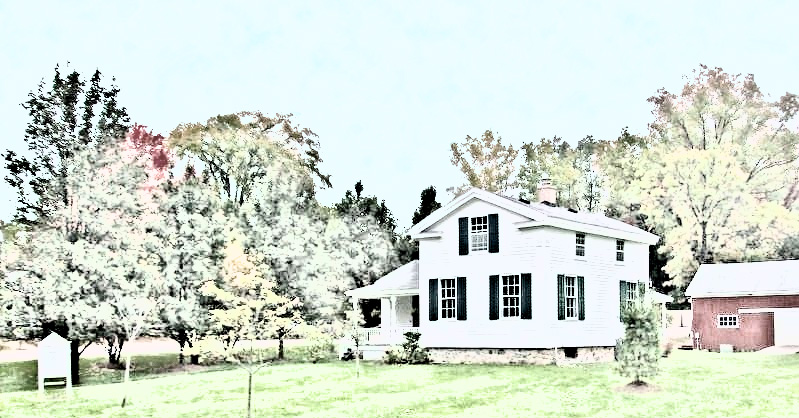
KREGER HOUSE
26565 Carol Street
The property was originally owned by Hamilton and Lucius Miller from 1848 to 1860. They may have built the house on this land.
The three buildings were relocated here from 26565 Scenic Drive in 2008. The house was in the family since 1901 when Charles Johnston and, German purchased the farm.
Charles Johnston’s grandfather was Jonathon Worthing, an original landowner. Grace German’s father, John German was a miller in the village. German Mill road is named after him.
The Greek Revival house is an upright and wing built around 1850. It is constructed on a stone foundation.
The largest crops on the Johnston farm were potatoes and corn. Mr. Johnston would load up his produce, and going by way of Sand Hill (later known as Redford), would travel to Detroit’s Eastern Market. Additionally, the farm boasted peach and apple trees along with pigs, cows and chickens.
At one time, the farm included a chicken coop, large barn and several sheds.
Charlie and Grace had a daughter Cora who married Arthur Kreger. Kreger was a prominent villager. He was a builder and active in the Cemetery Association. He was responsible for the Veteran’s Memorial in the cemetery. Maxine was their daughter and the third generation of their family to live here.
After Maxine’s death, her nephews Bob and Bart Kreger sold the farm. The new owner donated the house, barn and pig sty to the Franklin Historical Society with funds to help move the buildings near the village hall. It was an appropriate location because Maxine’s great grandmother, Grace German, wife of John German, the miller, lived here from 1885 to 1900.
Fundraising began! As each building was restored, FHS gifted it to the village. The pig sty became restrooms. The house and barn offered a meeting place for volunteer organizations. It can be rented for weddings, graduations, birthdays and other events.
It is an excellent example of adaptive reuse.

Listen:
NOBLE ROBERTS HOUSE
26091 German Mill
The approximate construction date is 1850.
One of the criteria for historic designation is who lived here. Noble Roberts, the village tin smith, lived here from 1869 to 1914. His shop was located on Franklin Road just south of Carol. It was common to live near your place of work. He could make or mend anything of tin or iron. He used to be the envy Of all of the boys because he could make such terrible faces and he did it unconsciously always when he was cutting tin.
Roberts was an elected officer of the Odd Fellows Lodge 59 in 1871. He was the leader of the Franklin Band.

Listen:
OLD CHURCH
26109 German Mill
In 1840, the church was officially organized with Reverend Laban Smith as preacher. In 1859, William and Emily Kyle deeded this land to the church to erect a house of worship. Thomas Bigelow, a carpenter, completed the building the following year.
In the spring of 1863, the building was dedicated. In 1880, the horse sheds were added behind the church. They were built the full length of the lot to stable horses and carriages during services.
In front of the church was an eight-foot-wide plank platform used to assist passengers in getting on and off their buggy, carriage or sleigh. The original church had wooden siding.
In 1906, the current rusticated block was added to cover the wood siding. Between 1906 and 1908, a fireplace and chimney were added along with a basement and belfry. The horse sheds were torn down in 1922 to make room for the automobile. Today the structure is a private residence.

Listen:
HENRY COX HOUSE
26111 Carol
This house was constructed in 1845. It is referred to as the Henry Cox home because he was a note-worthy owner. He was a physician, justice of the peace, school board member and the author of the bylaws of the Franklin Band. He served as an assistant surgeon in the 5th Michigan Cavalry in major battles including Gettysburg.
He attended the old church on German Mill and could always be found sitting in the same pew with his glasses on the top of his head. He was popular with young folks. One children’s day they asked him if he could carve a spider. It was so realistic when he was finished, the children were afraid.
It was made from a potato.

Listen:
FRANKLIN COTTAGE
26210 Evelyn Court
In the fall of 1827, Dorus Morton, a mason, came from Niagara County New York to Franklin with his wife and family. Ebenezer Raynale, his wife’s cousin, came the following year and boarded with them for a time. Raynale became the first doctor in the new settlement. They all lived in a log cabin that Morton built on this site. In 1833, Morton built a new addition to the cabin and opened a tavern called the Franklin Cottage.
In 1837, Peter Van Every bought the place and his son William became the tavern keeper.
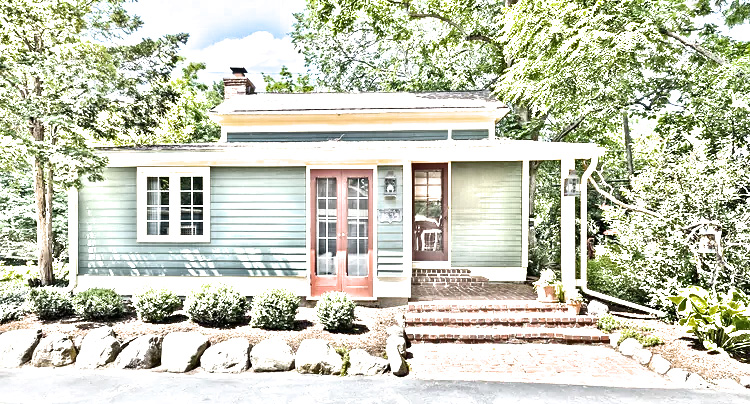
BARNUM HOUSE
26265 Fourteen Mile Road
An early map of Franklin shows this address to belong to William Barnum. Records don’t list him as living there; however, ever successive map shows this as belonging to him. He did have a farm near 13 Mile, Inkster and Wellington roads as well.
Barnum was born in 1808 in New York and married to Ruth Stoughton, a sister to Dillucene who was the first landowner in the village. Barnum’s father was a hatter for thirty years in Utica, New York. Seven family members worked in the business. William was one of them. In the 1850 census, Barnum is listed as a hatter in a shop at 95 Jefferson Avenue and his residence on Larned in the heart of Detroit. By 1860, he and wife and children moved to Franklin where he farmed. William was an upstanding citizen. He sany bass in the choir of the Methodist church on German Mill.
Ken Bristol (1913-1998) is another notable connected to this location. Bristol was born upstairs in the cheese factory on 14 Mile Road in Bloomfield. His father was the cheesemaker. Ken never ventured far from his beloved home. For a short time, he lived in Farmington. From 1936-1972, he lived with wife Evelyn no more than 1,000 feet from the cheese factory in the Barnum house!
Bristol preserved Franklin through his watercolor painting. He never had any formal training. He was a self-taught artist. We see our village through his eyes. The next time you’re in the Franklin library, check out the painting above the fireplace. The artwork depicts Franklin around 1875. It looks very much the same that it is today!
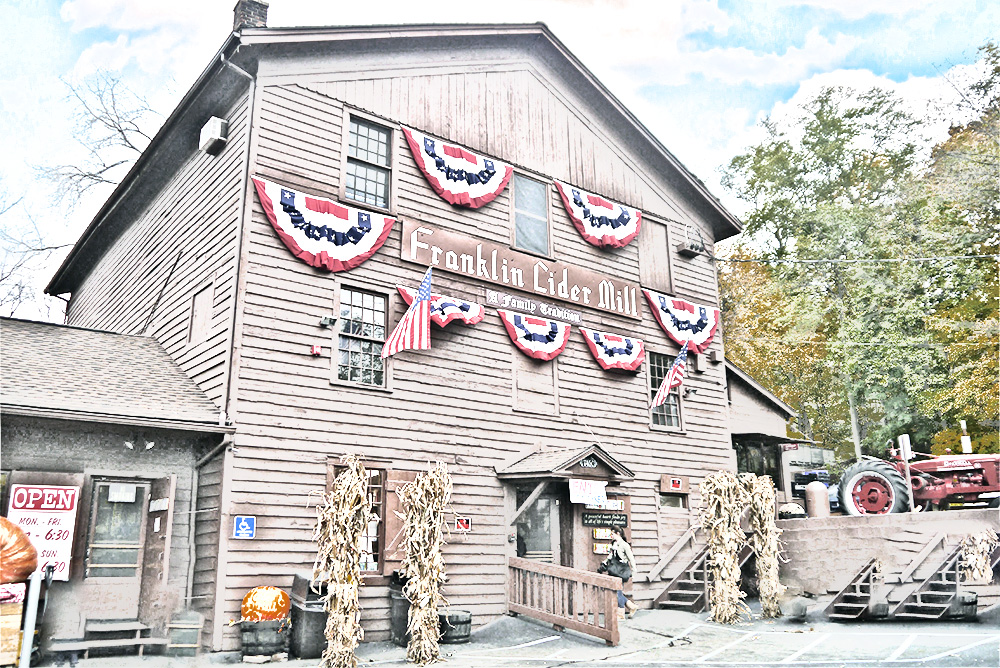
VAN EVERY GRIST MILL
7450 Franklin Road
The grist mill was owned by Colonel Peter Van Every, a War of 1812 veteran. The Van Every family lived in the white mansion caddy corner from his place of work.
The mill, built by William Pratt, was a timber frame construction of white oak, white pine and black walnut all hand hewned. Tansy bitters helped to motivate the workers who “raised” the structure around 1838.
Wheat was ground by a pair of circular stones each 4 feet in diameter and 6-8 inches thick. The stones were a form of dense coral. The bottom stone was stationary and the top stone revolved around a shaft.
The mill was successful because of its capacity. The river was swift at this point. Another reason for success was payment to the farmers in cash. Van Every once paid $21,000 at 50 cents a bushel in one day! Farmers came to the mill as far away as Howell. Wagons loaded with wheat were lined up along Franklin and 14 Mile roads.
In 1949, the grist mill was converted into a cider mill. Although it is called the Franklin Cider Mill, it is actually in Bloomfield Township.
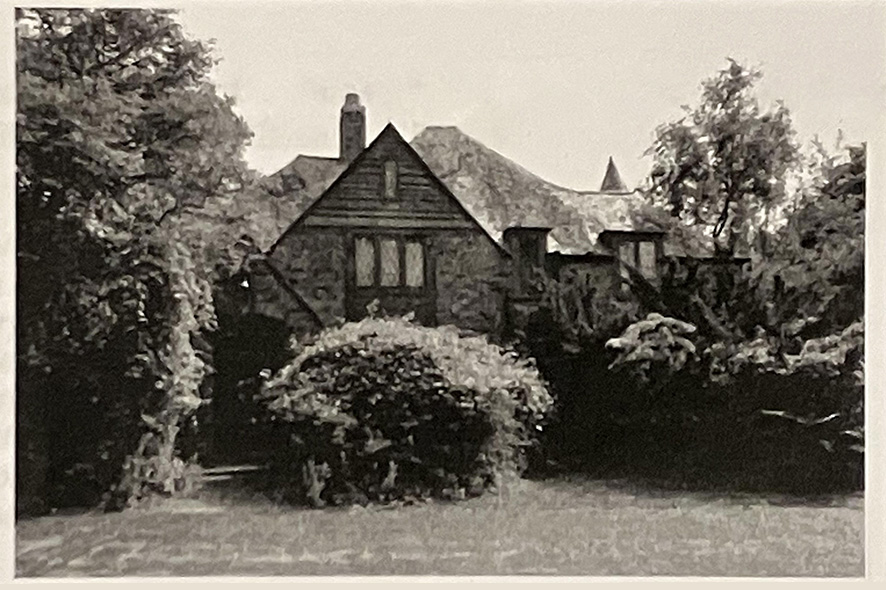
MELDRUM HOUSE
32020 Franklin Road
This property was originally owned by A.A. Rust, township supervisor, treasurer, postmaster, business owner, church leader and prolific landowner in Franklin. The land is shown in his ownership from 1845-1908. The home was designed and constructed by Architect William E. Kapp, of Smith, Hinchman, Grylls, who also designed National Historic Landmark Meadowbrook Hall in Rochester, Michigan. This home was contracted by owner C.H. Gracey. Local legend contends that Gracey traveled to Europe with Kapp to gather ideas for the design of his home, and upon returning lost all of his fortune in the stock market crash. Mr. Gracey had enough left to finish building the home, however, he was never able to live in it. It was the home of Hal Newhouser, Detroit Tiger pitcher and Hall of Famer from 1949-1966, and in the 1970’s, the home of Chuck Jordan, prolific Design Professional with General Motors.
It is a Tudor style home built in 1929. It has a concrete foundation, brick walls and a slate roof. It is a two-story house with cross gables, dormer windows, patterned brick work and a two-story turret. There is also a large three bay brick carriage house/garage with a flared slate roof. The structure is located on a 3 acre wooded lot.
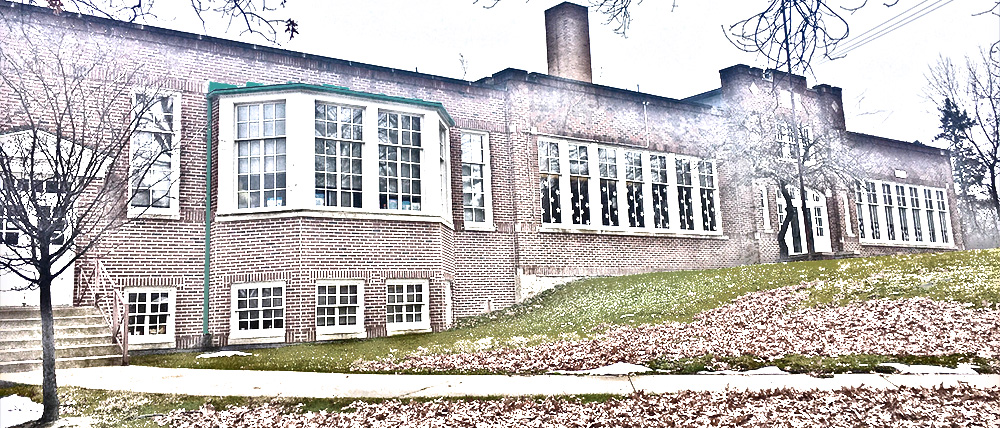
FRANKLIN SCHOOL
32220 Franklin Road
At the top of the hill on Franklin Road stands the fourth school that existed in the village. It was built in 1923 after the existing Brick School (1869-1922) burned down. It served as a public school until 1978.
The first two rooms were built on the burned-out site.
On 5 January, 1945, Franklin electors voted 80-1 to join the Birmingham school district. In the fall of that year, schools opened the doors to Franklin children. The first senior class from Franklin consisted of five girls and four boys.
On Sunday, 18 May, 1978 the historic marker was erected. Franklin school is designated as an historic building.
It is currently the Huda School.

SCHOOLHOUSE
32310 Franklin Road
The log schoolhouse located where the police station now stands had been outgrown. In 1845 the red -framed schoolhouse emerged to accommodate more students.
The land was originally owned by Dillucene Stoughton, the first landowner in Franklin. The red- framed building was erected as a one room schoolhouse near the bottom of the hill. All of the grades were taught in one room.
If you could read, write and know fundamental Arithmetic, you were considered competent to teach. A teacher often boarded with families of their students as part of their salary. Generally, women taught school in the summer when those unruly boys were working in the fields. In the winter term, male teachers used an iron hand in keeping the young’ins under control.
In 1852, the Cemetery Society was formed. The trustees often held their meetings in the schoolhouse.
After the Civil War, Dr. Henry Cox used the building as his dispensary.
In the 1920’s, it was improved with the addition of plumbing and a two bedroom wing and garage.
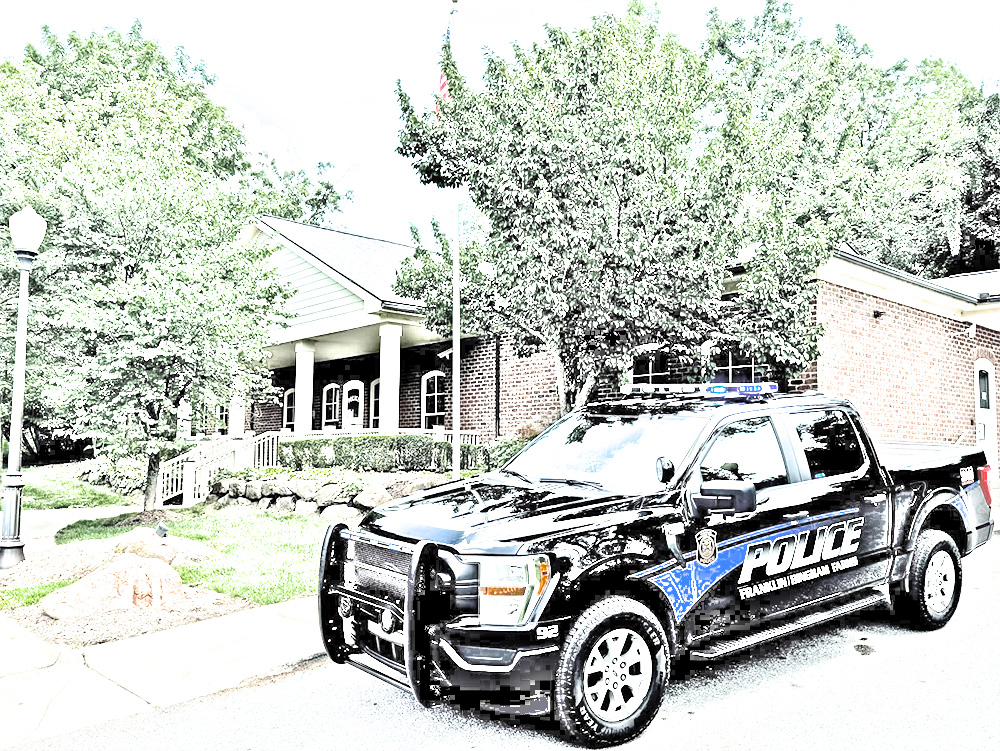
FRANKLIN POLICE STATION
32311 FRANKLIN ROAD
The Police Department provides 24/7 police service provided by a budgeted staff of 12 full time officers. The department is comprised of a command staff of one Chief of Police, one Lieutenant and two Sergeants. The department also has three part-time clerks, a social media coordinator, and three reserve officers.
The police station was built in 2001 on property donated by Elijah Bullock, second landowner in Franklin. The story is that Bullock was unable to read; therefore, he wanted to provide that opportunity for children. A log school, the first one in Franklin was built where the police station now stands.
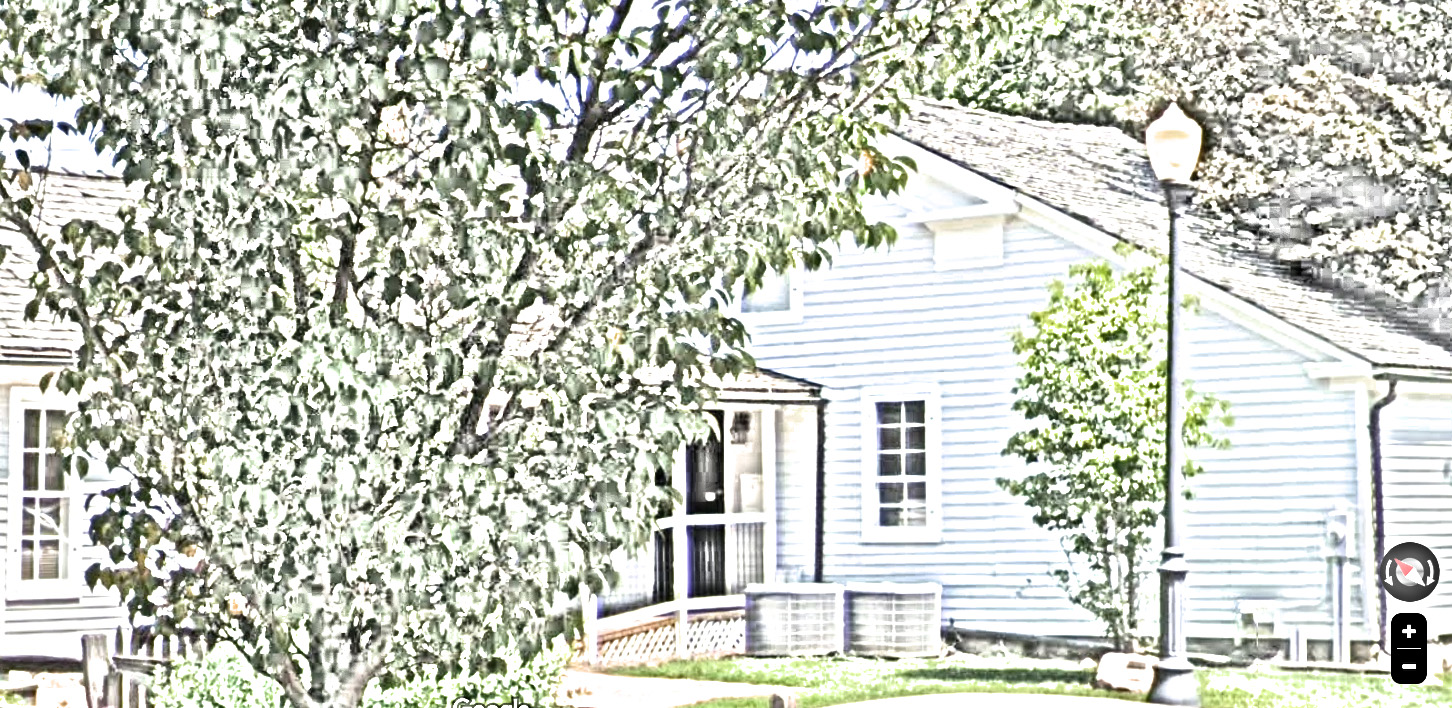
BROUGHTON HOUSE
32325 Franklin Road
A structure is determined historic by three criteria: the age of the building, its architectural style and the people that lived here and/or events that occurred here.
It was built around 1835 by Benjamin and Charlotte Worthing. Benjamin was the nephew of Jonathon Worthing, an original landowner.
The building has Greek Revival characteristics. It is a one and a half story structure with eyebrow windows and gable roofs.
Notables that lived here include Robert Kyle, a Civil War veteran in the 14th Michigan Infantry, Daniel Broughton, his wife Susan and sons Edward and Herbert as well as Jane German, widow of John German who was a miller in the village. The street German Mill is named after him.
Broughton was a prominent buggy maker. His two-story buggy shop was located where the post office now stands.
Events that occurred here were Cemetery Society meetings, the funeral of Eddie Broughton, the marriage of Herbert Broughton, son of Daniel Broughton, and Lizzie Pickering as well as the marriage of Charlie Johnston and Grace German, daughter of John and Jane German. Walter Johnston, nephew of Charlie and Grace German Johnston was born in an upstairs bedroom.
The walls of the Broughton house ooze with history.

Listen:
The Village Green
32405 FRANKLIN ROAD
Imagine a different village green with 24 townhouses in two rows, each one on a 20 by 100 -foot lot in the village green area between the library and the church! This was the vision of George Wellington Smith, a realtor in the village in the 1930’s.
In 1957 Smith’s dream became his nightmare. He was forced to sell his land to pay back taxes.
Four Franklin families, Ed and Marian Green, Bob and Sadie Hampson, Donald and Violet Green and Benjamin and Louise Kronlund would relieve Smith of his burden and benefit the village.
They purchased the property and in turn sold it to the village for the amount they had paid for it. Our village green was made possible because of the vision and generosity of these families.
We have a place to hang out on quiet mornings, lazy afternoons and pleasant evenings.
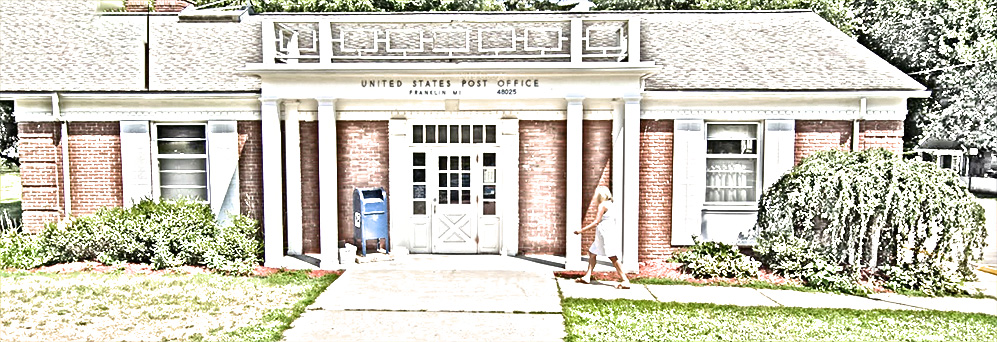
Listen:
THE BROUGHTON BUGGY WORKS
32406 Franklin Road
Daniel Broughton, an Englishman, was a wagon maker. He built a two-story brick building on this site in 1866 where he built wagons, carriages and surreys and shipped them to many parts of Michigan. He retired from buggy making in 1885 and became a farmer in Bloomfield Township. It is not known when the buggy works building was torn down but the lot stood empty for many years.
The current post office building was constructed in 1959.

Listen:
ALBERT RUST HOUSE
32440 Franklin Road
This house, an elegant Queen Anne brick building, was built in 1890 by Michigan native Albert Rust who was a township supervisor, treasurer, postmaster, church leader and merchant. Rust hired a New York architect to design the most beautiful home in the area at a cost of $5,000. He married Elizabeth German the daughter of John German, one of the first millers in Franklin. Their daughter, Ada, died when she was a teenager. The other daughter, Alice, married George Bingham who built the brick store. He and Alice also built the house on Franklin Road across German Mill in 1901.
In 1861, Rust bought the John Bigelow general store that was located on the southeast corner of German Mill and Franklin Road. His home was just south of the store. Between 1869 and 1890, he moved his home to a location on German Mill (26088) so he could build the current house.

Listen:
FRANKLIN PUBLIC LIBRARY
32455 Franklin Road
The Franklin Public Library was started at Franklin School (now Huda School) by the PTA, with a collection of donated books. In 1931, a shed attached to a house at Thirteen Mile Road and Wellington Road was moved to the current spot and placed on the foundation of the Sammy Green house. The structure first served as a real estate office for George Wellington Smith.
In 1938, G.W. Smith gave the building to the Franklin PTA for the two year old library. In 1939, it was expanded and remodeled to serve as village office, police station and library. By the end of 1939, the school’s PTA had turned the library collection over to an executive board, which hired Margaret DeView, a Franklin resident, as librarian. The collection amounted to 755 books (100 on loan from the state library) and 157 villagers were registered as patrons.
In 1973, the village office and police station relocated to the Broughton House (32325 Franklin Road, still village office as of today). The Franklin Community Library Association turned over all its corporate assets and its holdings to the Village of Franklin, and officially became Franklin Public Library.
In 1984, the first professional librarian was hired. By 1991, the library was fully automated with an electronic catalog, and opened 41 hours per week. The collection had risen to 13,691 volumes!

Listen:
GEORGE BINGHAM HOUSE
32620 Franklin Road
George Bingham’s home at 32620 Franklin Road was built in 1900. He was a young clerk in the Albert Rust store that was located on German Mill and Franklin Roads. He married Alice Rust, Albert’s daughter who passed away in 1901.
Three years after Alice’s death, he married Clara Cox. They had three children: George Arnold, Florence and James Howard.
This house is built on the site of the first brick home in Oakland County by Dillucene Stoughton, Franklin’s first landowner.
The Queen Anne style, two story home, is entirely made of red brick stretcher bonds with contrasting mortar, except for its many gables that are covered in beige colored wooden shingles that represent fish scales. A new wing was added in 1987.
Until 1964, it was a private residence. Ed Crane opened an interior design studio here followed by Perlmutter design studios.
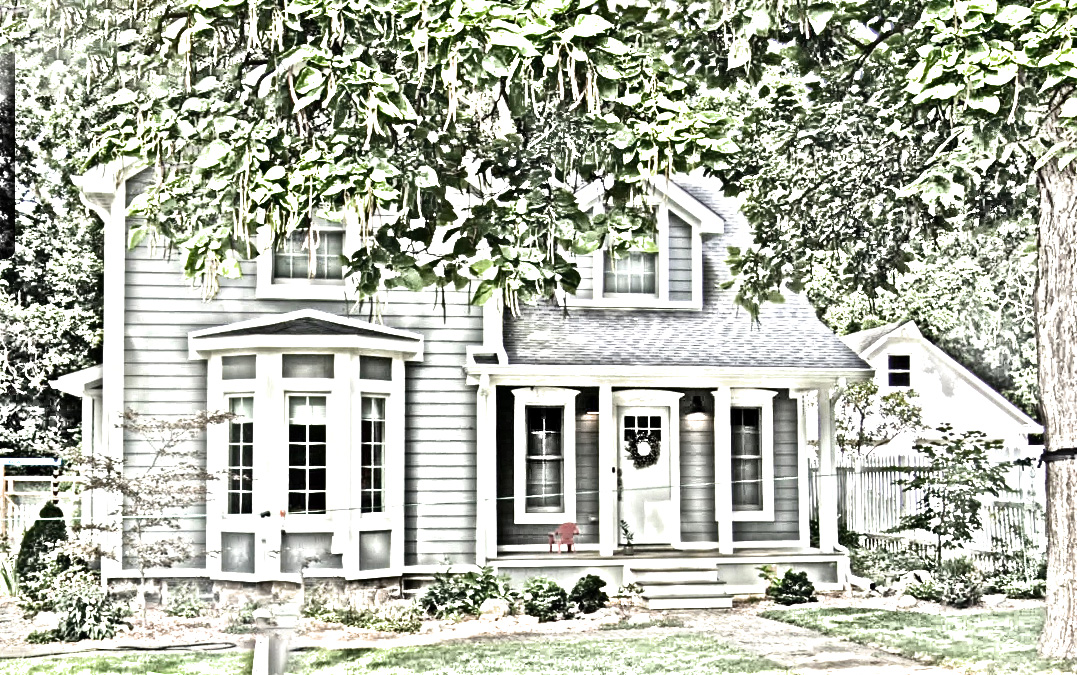
SNOW HOUSE
32635 Franklin Road
The Snow house, named after Janette Snow, was built circa 1885. She was the first occupant. The house had an addition and was remodeled by Art Kreger.
It is an upright and wing design which was common during this time period. The two- story front gabled house has a wide shed roof porch on the wing portion and a large bay window in the upright portion.
Janette was born in Genesse, New York in 1830 to David and Lydia Parkhurst. They lived on Romany Way.
In 1860, she worked as a domestic for the James Durham family. It was a common occupation for women. In 1873, she married Alonzo Snow, a widower. They lived in Bloomfield on 110 acres. Ten years later, Alonzo passed away.
In 1885 Janette bought this building. By 1900, she lived in a mortgage free home.
She attended the Methodist church on German Mill. It was just a hop, skip and a jump from where she lived.
Janette passed away in 1909. She is buried in the Franklin cemetery.
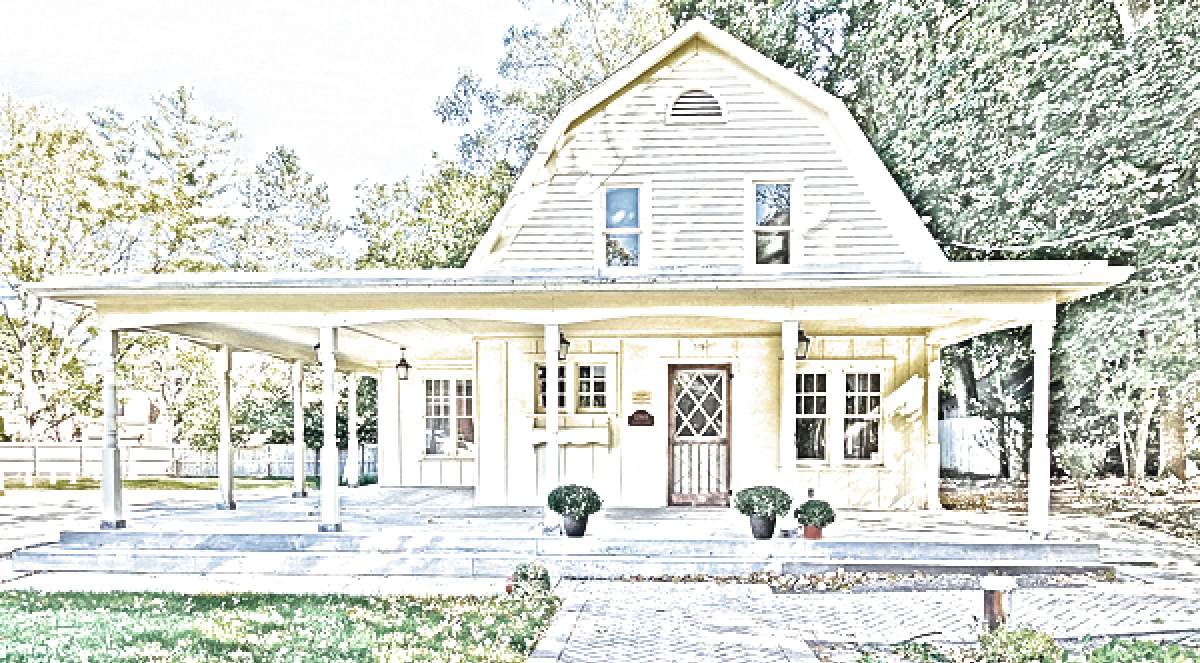
BRICK STORE BARN
32644 Franklin Road
The Brick store and the barn were part of the George Bingham property. The two- story barn has a gambrel roof. During the late 1800’s, barns with a gambrel roof were popular. The roof increased space within the barn for more storage, especially for hay. Windows were added later to provide circulation and light.
In 1904, Bingham sold the properties to John Currin. Currin stored plows, cultivators, mowers and feed that he sold. He also sold groceries, hardwood, shoes, paint and dry goods. Freight was delivered by electric line to a freight house on 14 Mile and Orchard Lake. The first gas for automobiles was pumped at Currin’s store. Gas was brought over from Birmingham by a team of horses and wagons about 500 gallons at a time!
In 1930, John and Elsie Pickering Currin remodeled the barn into a house and gifted it to their son Norman and his wife Jean as a wedding present.
Whoa! Let’s stop here and rewind to learn the chain of events that brought this family in the village of Franklin.
Norman’s great grandmother, Harriet Forman, left England in 1853 with her six children to join her husband William who had traveled to America a few years before. Cholera broke out and four of her six children passed away.
Lottie Forman, Norman’s, grandmother, would marry George Pickering. Their daughter, Elsie Pickering, would wed John Currin. And, John and Elsie would give birth to Norman, a fourth generation!
The story of the barn didn’t end here. It would undergo further renovation and become a beauty salon, yoga apparel shop, gift store and as a sweet ending, an ice cream parlor.

LILLIE BERGER HOUSE
32647 Franklin Road
This is a two and a half story, gable front and wing brick structure was built around 1900. It has a one and a half story addition on the north side added in 1985. It was built on the property owned by Charles Berger, Lillie’s older brother.
Lillie was born in 1881. She was only 30 when she passed away. She never married. Like many women, she worked as a domestic.
Otto Berger, a Civil War veteran in the 5 th Michigan Infantry was Lillie and Charles’ father. Rachel Van Every, their mother, was the granddaughter of Peter Van Every Sr., a successful grist mill owner (Cider Mill.)
Lillie was a devout Christian and active in the Methodist church built in 1860 on German Mill. I bet that she and Janette often walked together on a Sunday morning to attend services.

Listen:
THE BRICK STORE
32652 Franklin Road
The Brick store at 32652 Franklin Road was built in 1900 by George Bingham on the foundation of the Odd Fellows hall that had burned down. It was the village general store and post office where all of the necessities of life could be purchased.
The first gas for automobiles was pumped here. Gas was brought over from Birmingham by a team of horses and wagon about 500 gallons at a time. Villagers would come here to use the phone, pick up their mail and share gossip.
John Currin bought the business and the building in 1904 and it remained in his family until 1941.
In 1931, Bert Wood and his daughter Mildred, became the merchants. They built a one-story addition on the north side of the Brick Store in 1940 where they sold toys, hardware and ice cream. In 1941, Leslie & Wanda Fraser began operating the grocery business called Franklin Food Shop in the south side of the building.
In 1958, John Showers purchased the building and renamed the store the Golfdale Market. The following year, Ted LaVergne took over the business, but not the building and changed the name to the Market Basket.
Around 2000, the Hakim family ran the Market Basket and Chef Carl transformed the business by offering gourmet prepared foods, pastries, pizza, sushi as well as grocery store items.
Lisa McDonald currently manages the business called Driven.
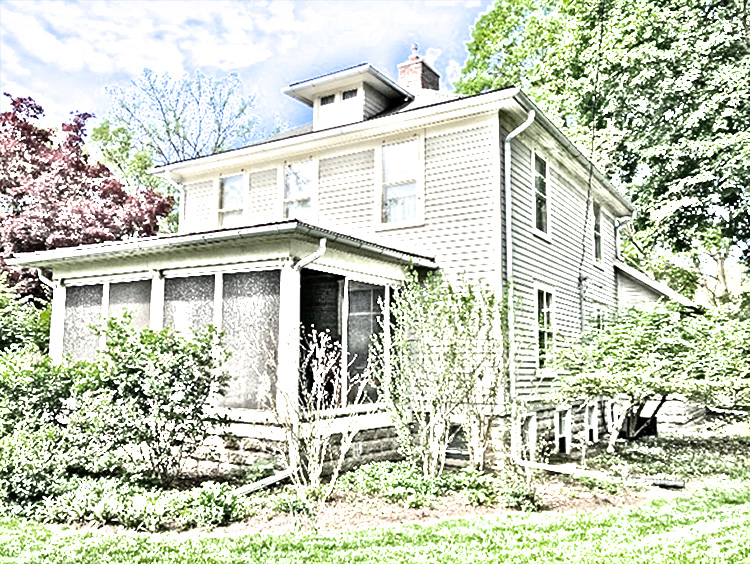
FRANK D. GERMAN
32663 Franklin Road
In 1903, this American Four Square was built for Frank German (1860-1945.)
German attended Ferris State and received his degree in medicine. Dr. German had his practice in the basement of his home.
In the barn behind his house, he kept his buggy. He was always ready to make house calls. On the outside of the barn he carved the initials F.D.G. which stood for Frank Durkee German.
John German, the miller was Frank’s uncle. This was a small village. You were either related to someone who lived there or you certainly knew about them!
In 1906, he married Nettie Dunbar. The couple lived just a few doors from the Franklin Hotel where her parents lived. Five years after their marriage, Nettie’s father, Adna passed away. Dr. German attended him.
Janette Snow and Frank German just lived a house a part from one another. When Janette became ill in 1909, Dr. German took care of her.
Now, there were three homes on the west side of Franklin Road.
Check out the next one. It is a redid-cut house.
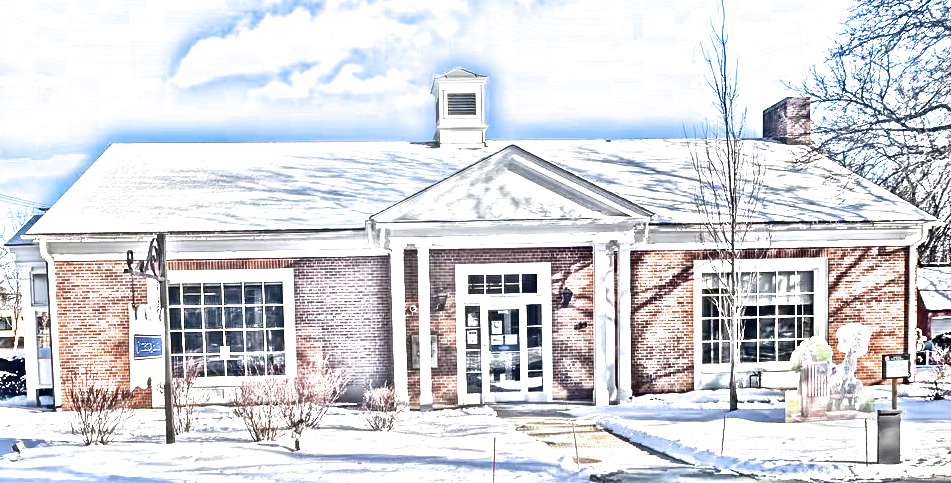
COMERICA BANK
32682 Franklin Road
This is yet another property owned by Dillucene Stoughton who traveled from Niagara County, New York to make a new home in what would be known as the Stoughton-Bullock settlement. Elijah Bullock, also from the same county, was the second landowner.
It is a Colonial Revival building built in 1955. It stands on a former orchard.
Since its inception, the building was always a bank.
During the 1860 election, this was the site of the Lincoln Pole raising. A banner was raised reading Abraham Lincoln and Hannibal Hamlin. The Republicans built a stand for the speaker and loaded the cannon to be fired in celebration at the end of the event. However, a group of Democrats were up to some shenanigans!
If you hang around Franklin long enough, you’ll surely hear the rest of the story!

MC CLOW HOUSE
32683 Franklin Road
Who would suspect that this building was a kit or catalog home? Kit homes were popular because they were affordable. Customers picked out the style of house that fit their needs and budget. They could choose a home plan from a catalog as well as specific types of doors, windows, hardware and moldings. Lewis shipped the building plans, pre-cut lumber, hardware and thousands of individual parts in a boxcar to Birmingham. It was the owner’s responsibility to make arrangements for delivery to Franklin and employ people to put it together.
This house is a 1792 square foot craftsman style Lewis Home Company (Bay City, Mi) kit house that cost $4,039. It was built by William Henry Spicer in 1917. Prior to building this house, Mr. Spicer owned acreage on Maple Road east of Telegraph that he sold to the developers of Oakland Hills Country Club.

FIRE DEPARTMENT
32707 Franklin Road
This Colonial Revival structure was built in 1959. During this time, other buildings (post office, bank building and police station) were also this type of architecture. The face of Franklin was depicting the time.
The fire department is on the grounds of the Community Hall built around 1900. It was a two-story building which was a gathering place for dances, plays, oyster suppers and other festivities. It burned down in 1958.
Ironically, it was decided to replace it with a fire station!

BUEL/SLADE HOUSE
32710 Franklin Road
The Buel/Slade house located at 32710 Franklin Road was built in 1866 by Dr. Julian Buel who practiced medicine and lived here with his wife, Malintha Durkee and daughter Kittie. The next occupant was Kittie and her husband Samuel Ira Slade. Five generations of the Buel/Slade family lived here until 1949.
Before the house was built, Julian Buel’s father, Dr. Henry Buel, owned the property. Prior to the Buel family ownership, Dillucene Stoughton, Franklin’s first land owner, built a 20’ by 26’ log cabin at the rear of this property. It was Franklin’s first established home. The current structure is an example of the Greek Revival style.
Sam Ira Slade (Kittie’s husband) was a professional actor and singer and became famous for his yearly portrayal of Abraham Lincoln reciting the Gettysburg Address. When the house was renovated in 2018, a letter written by his wife, Kittie Buel in 1883, was discovered in the attic. She wrote it to her dad asking for permission to come home from the boarding school she was attending in Port Huron.
In the 1940’s, Kittie’s son, Sam Buel Slade, invented the dry roasted peanut in the rear building. He sold the process to American Home
Products for a million dollars.
After the last Buel/Slade family moved out, the house became the home for a number of small businesses, including a barbershop, “Slades” gift shop, a knit store and others. In 1993, it was renovated by a group of attorneys. In 2019, it became the Franklin Holistic Medical building. The property originally included a barn and the land where the Ravine Condos are now located.

GAS STATION
32725 Franklin Road
In the 1950’s, Rudy Hanson opened the gas station. His residence allowed for a short commute to work! This was the last of the gas stations that appeared in Franklin. The previous locations were the Fred Van Every store/pool house, the Jones Building and the Wood store (Brick Store.) You’ll discover more about these historic places as you continue the tour.

Listen:
JONES BUILDING EVOLUTION
32716 – 32740 Franklin Road
Originally this structure was built in 1936 by William K. Jones to house a garage and dry cleaners. Jones was appointed the Franklin postmaster that same year and moved the post office into the south end of the building where it remained until 1960.
Beginning in 1947, additions were constructed on the east (rear) elevation. The north half has a front gable roof (the peak of which is visible from the front of the building). The south half has a flat roof. The Village’s first real gas station was located here and also run by Jones. At one time, a one-horse power fire siren was mounted on the gas station and Mrs. Jones manned the fire phone. The building has evolved structurally as well as commercially.

Listen:
BULLOCK TAVERN
32731 Franklin Road
In 1830, Elijah Bullock, Franklin’s second landowner, built a log cabin structure on this site and opened it as a public house.
It is one of the oldest authentic structures in Franklin and was the first tavern to be built here.
The current building is a three-bayed front structure which was a common style of the time. It has had five additions to the original core. The last addition, a small gable on the south side of the building, connects the old tavern with the gas station. It was built around 1952.
The building has operated as a barbershop, slaughterhouse, bookstore, hardware store, jewelry shop and photography studio. Alan Trammell, a former Detroit Tiger, often had his hair cut here. It was not unusual for a barbershop quartet to perform on the porch.
The Franklin Hardware store closed its doors in 1974 and was, at the time, the oldest continually operating business in Franklin. Harry and Emma Huetter owned the business for thirty years.
In 1980, Jack Gorback, a photographer bought the building. The Abstract and Title Guarantee Company shows that the land changed hands more than fifty times between 1824 and 1950.
The floor joists are hand-hewn logs carved with the initials of some early settlers.
ICE HOUSE
(Behind Bullock’s Tavern)
 An ice house was a building for storing ice throughout the year. It was a two-story structure with blocks of ice piled high separated by a layer of sawdust as insulation to slow down the melting process.
An ice house was a building for storing ice throughout the year. It was a two-story structure with blocks of ice piled high separated by a layer of sawdust as insulation to slow down the melting process.
The ice would stay frozen for many months even until the following year.
Ice was commonly used for storage of perishable foods. The ice was typically used by the shop keepers. Residents would purchase ice from the ice house on East Maple in Birmingham, Michigan.

Listen:
CONGLETON HOUSE
32750 Franklin Road
George and Susan Congleton moved to Franklin from New Jersey in 1849, the same year that he opened the buggy works next door. Their four daughters and Susan’s mother came with them. A son was born here.
Besides owning the buggy works, he was secretary of the Cemetery Society. He also met with the new minister, Reverend Pitts C. Lanning, and other villagers to work out an agreement to build a church. The church still stands as a private residence on German Mill.
The house was residential until 1970 when it became a commercial building. Some of the businesses that were here included the Village Tea Room, Mrs. Lovel’s Tea Kozy, Horse’s Head Bookstore, Staufer’s Baseball Card Shop, Ranier Pastry Shop, the Rocking Horse and others.

Listen:
FRANKLIN HOTEL
32751 Franklin Road
The Franklin hotel at 32751 Franklin Road was built around 1830 by Doctor Ebenezer Raynale and served as the first general store in the village operated by William Houston.
In 1840, Dr. Raynale moved to Birmingham and the building was sold to George Green who moved another structure and joined it to the rear of this building. It functioned as a hotel, tavern and stage coach stop. Green was the hotel keeper. It was the third tavern in Franklin.
Farmers from Southfield and nearby towns sold their wheat to the Van Every grist mill, now known as the Franklin Cider Mill, and would stay overnight at the hotel before their long journey back home.
Two men, Michael Burns and James Darling, boarded here prior to enlisting in the 5 th Michigan Infantry during the Civil War.
There were many stories of the happenings at the Franklin hotel as it was known as one of the rowdier taverns in the area. Tales of midnight brawls, the breaking of doors, the smashing of windows and throwing things at the lady of the house, were reported in the Pontiac Bill Poster of 1872. The Franklin hotel was the last tavern in the village to close. In 1973, the building served as a home for ten years, then a place for small businesses.
The wood frame house is of Federal style including Greek Revival additions. Its rubble foundation and basement walls are made of uncut fieldstone. The floor joists are hand -hewn logs carved with initials of some early settlers.

Listen:
CONGLETON BUGGYWORKS
32760 Franklin Road
This building is an authentic reconstruction of the original buggy works that burned down on January 27, 1979. The bellows, wheel rim bender and wheelwright bench were spared and are on display at the Franklin Historical Museum 26165 Thirteen Mile Road at Kirk Lane. Dillucene Stoughton, Franklin’s first landowner, purchased this property in 1824. His land deed was signed by President John Quincy Adams.
In 1849, the land fell into the hands of George Congleton, a blacksmith, and remained in his grip until 1876. A Pontiac Gazette article of the time depicted the blacksmith and his work by writing “Through the double wooden doors, Congleton can be seen
working on a lightweight buggy. Curved pieces of hickory wood hung over his head, drying. Congleton makes buggies for farmers who can afford to keep a fast- paced trotter in the barn next to their team of work horses or oxen used for heavy hauling.”
Richard Cummings, an Englishman, was the next long- term tenant. He manufactured carriages, wagons and sleighs. He used the rear building for cabinets and general wagon repair and leased the front to a blacksmith. The top floor was used for painting buggies. Cummings’ sons owned the property until 1940.
Like other historic buildings in the village, the buggy shop housed a variety of specialty stores such as an antique and patio shop, plant hospital, the Village Barn and most recently, the Franklin Grill. It’s another example of adaptive reuse.

MIDGLEY HOUSE
32767 Franklin Road
Peter Van Every Sr. built the house in 1835. It is a one and a half story wood frame Greek Revival home. It has a wrap around porch on the front and south side which is not original to the structure.
Thomas Midgley, an Englishman, was its first occupant. He and his wife, Mary, raised eight children. He was well-known as a well- digger, however, an 1850 census cites him as a fuller. A fuller is someone who works with yarn, fabric and thread.
In 1858, Midgley purchased 100 acres of land from Daniel Thorne, an original landowner. An 1860 census lists him as a farmer. During that year he produced 250 bushels of wheat, 40 bushels of rye, 500 bushels of Indian corn and 100 bushels of oats. He also had 2 horses, 3 milk cows, 48 sheep and 16 swine. He lived in the heart of the village, but farmed on land on Wing Lake Road.
ICE HOUSE
32767 FRANKLIN
(Behind the Midgley home)
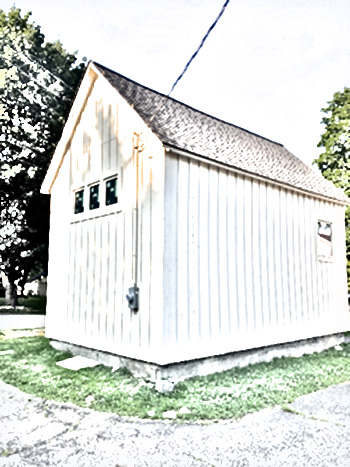 Ice was cut from lakes around town, mostly Wing Lake or the mill pond.
Ice was cut from lakes around town, mostly Wing Lake or the mill pond.
Hand saws were used to cut squares and then the plow would cut beneath.
Sometimes two thousand cakes were marked off, plowed up, cut and put in the ice house. The ice couldn’t be cut if it was too thick, and, if it was too thin, the store keepers wouldn’t pay for it. It was two cents for a cake of ice.
The store keepers got sawdust from Simpson’s sawmill at 13 Mile Road and used it to pack the ice.
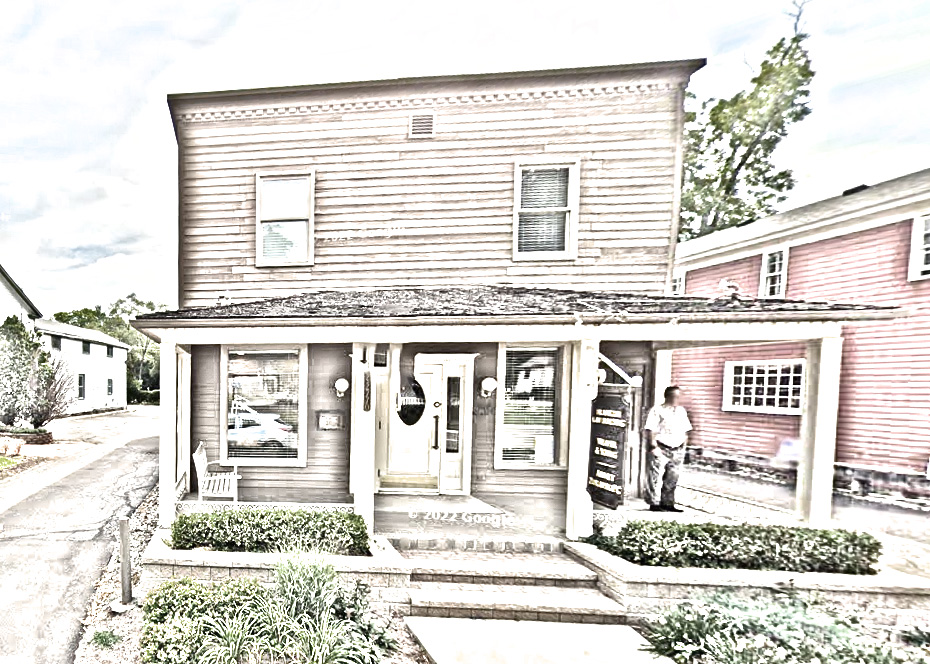
FRED VAN EVERY BUILDING
32770 Franklin Road
This two- story, wooden frame building was built by the descendants of the Van Every family in 1918 as a store, billiard parlor, candy store and was the first home of the Golfdale Market.
The pool hall was used by the men in the evening to talk and use the spittoon!
Around 1945, the Van Every family, Fred and Stella, leased the building to the grocery store and moved to Southfield. They were the third generation of Van Everys to live in Franklin. Fred was the grandson, of Peter Van Every Sr. who owned the grist mill at 14 Mile and Franklin roads (Cider Mill.)
In 1954 it was an interior decorating shop and later Gerald’s Salon. It has also been occupied by attorney offices.
The building was built on the public county road easement making it impossible to widen Franklin Road on this curvy stretch.

Listen:
THE VAN EVERY HOUSE and TEMPERANCE HOTEL
32800 Franklin Road
Peter Van Every and Amy Deer built their house on Franklin and 14 Mile roads around 1838. Together, they raised 14 children. The home was in the Van Every family for three generations.
A Colonel in the War of 1812, Peter was also a member of the Michigan Territorial Legislature, a postmaster in Franklin and a successful miller. When Peter Jr. and his wife, Jane Drake lived in the house, it became a hotel. Liquor was not served here, thus the name Temperance Hotel. It was also a stagecoach stop. In 1914, Fred, Peter Sr. grandson and his wife Stella converted the hotel back into a single- family dwelling.
The structure has been a home for a nursery school, interior designer, hair
salon, antique and retail shops.

VAN EVERY CARRIAGE HOUSE
32802 Franklin Road
Around 1840, the carriage house was built for the Van Every family. Colonel Peter Van Every, a War of 1812 veteran, his wife Amy Deer and their large family lived in the mansion. Their grist mill was on the northwest corner of 14 Mile and Franklin roads.
Peter Sr. passed away in 1859. Peter Jr. and his wife Charity managed a Temperance Hotel in the mansion.. Did the incident described below occur at the carriage house?
A Pontiac Poster from 1872 read: “Two horses belonging to Peter Van Every Jr. were disfigured by the loss of their tails at the hands of the unknown. The horse’s manes were also scalloped in the latest style. Mr. Van Every’s prominence in the suppression of liquor traffic is supposed to be the cause of this outrage.”
William Spicer’s farm was located where the Oakland Hills Golf Club is now. In the winter, he would drive his bobsled on his way to the Community Hall oyster suppers in Franklin and pick up people along the way. Others would come in sleighs to join the festivities. Many would board their horses at the Van Every carriage house.
Through the years, the building has been used commercially as a spice shop, gift store and events planning.
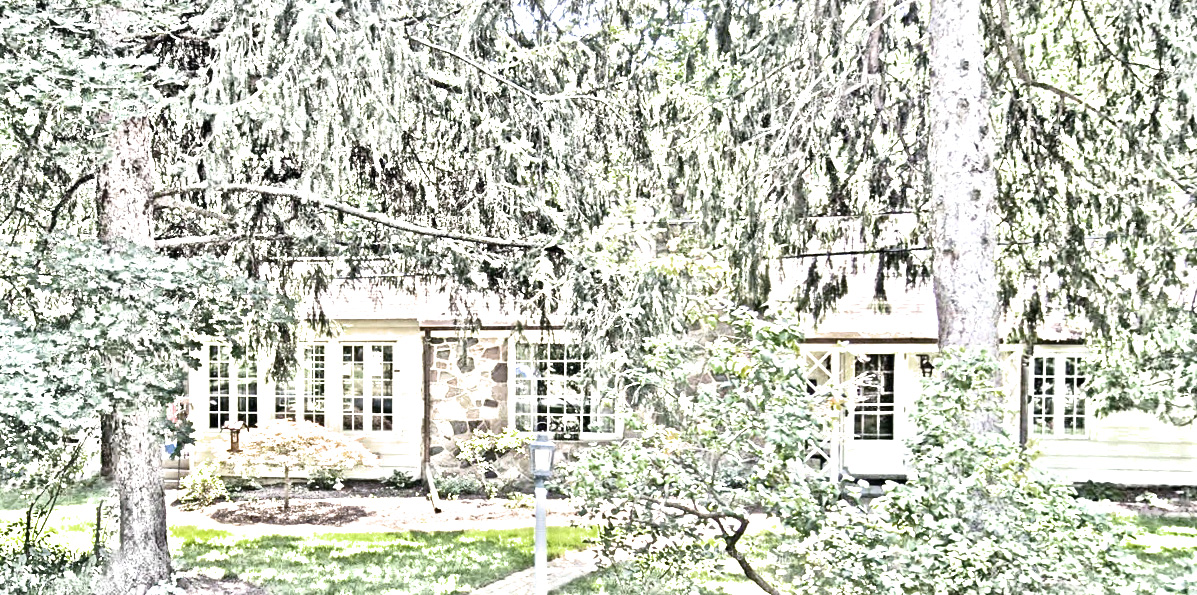
JOHN LOCK HOUSE
26475 Scenic Drive
On June 8, 1824, Daniel Wood, from Niagara County, New York purchased the property where this house stands. Wood built a log house on the corner of Scenic and Franklin roads.
In 1860, John Lock, an Englishman purchased the land. Sometime after that, he built a Greek Revival, 1 ½ story side-gabled frame house. That portion of the house is original to that time period. There is a 1 ½ , two bay brick barn/storage shed behind the house. It was used as a blacksmith shop.
Around 1940, Art Kreger, a prominent villager and builder remodeled it. The cypress wood from the mushroom farmer that once lived here are panels on a living room wall.
In the fall of 1864, John and Mary Brown purchased the property from John and Harriet Lock for $400. Brown was a blacksmith. Soon after the purchase, Brown enlisted in the 3 rd Michigan Infantry Company G. He died of disease in New Orleans in July 1865 leaving behind his wife and five children.
In 1878, Mary married Joseph Ferguson who was also a soldier in the Civil War. He served in a New York rifle unit. Around 1886, the couple sold the house to Mary’s daughter Rebecca and son-in-law William West. West, like John Brown, was also a blacksmith.
The home retains its original location and the rural setting of woodland property close to a main road. Two Civil War soldiers lived here. The home was remodeled in the 1940’s by Art Kreger who was known for his construction work. For these reasons, the home and property add a piece to the historic past of our village.
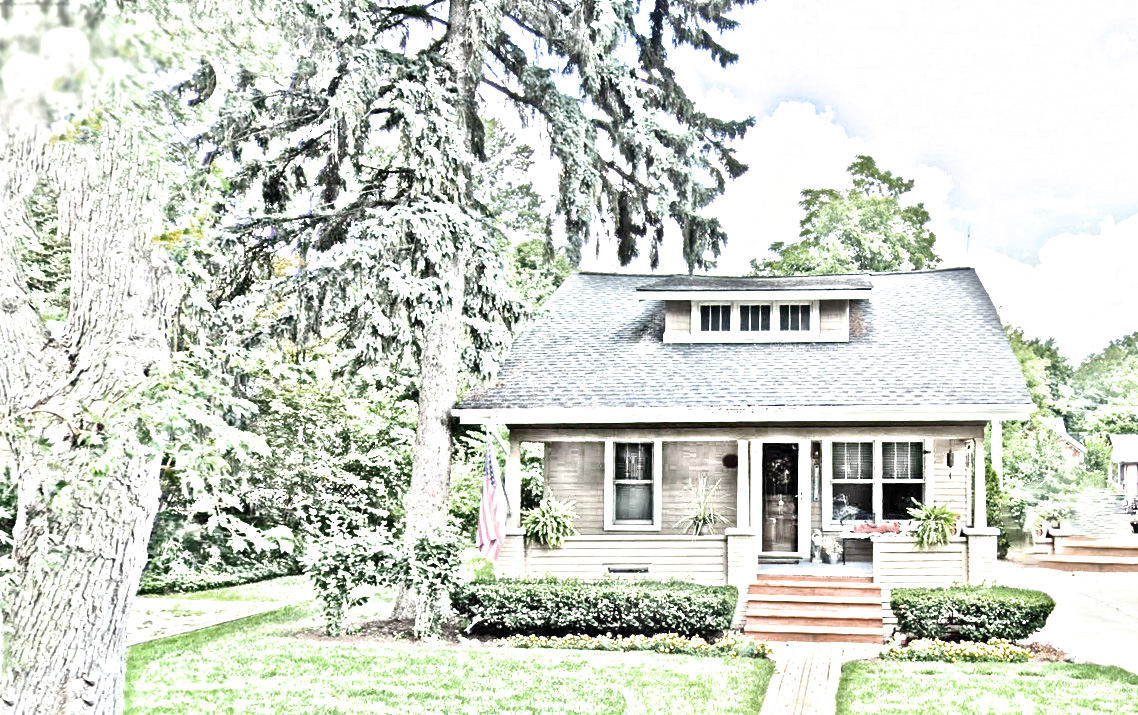
CATALOG HOUSE
26234 Vincennes
This is the third catalog home William Spicer had built. The first one he had built for himself, the second one for his son Harry and this one for his daughter Hazel. It was constructed in 1920. It was thought to be a Lewis Company build, Glendale model. It is speculated that when constructed, the builder may have made some alterations to the design. It 1929, Bert Wood, a local builder and historian did some remodeling.
Like the other two homes, they were shopped from a catalog. It is not certain whether Hazel picked out the type of house or the materials for it. It could be that since dad held the purse strings, the decisions were his.
Hazel was a year older than her brother whose home was next door to her. In 1919, she married Emor Nichols at the Methodist church on German Mill. Like Harry Spicer, Nichols was also a WWI veteran.
The significance of these three homes is the uniqueness of their build. Catalog houses were affordable. They offered the owner an opportunity to customize their home to their liking. Although there were specific models, they were in themselves unique to the person who designed them specifically to their needs and budget.
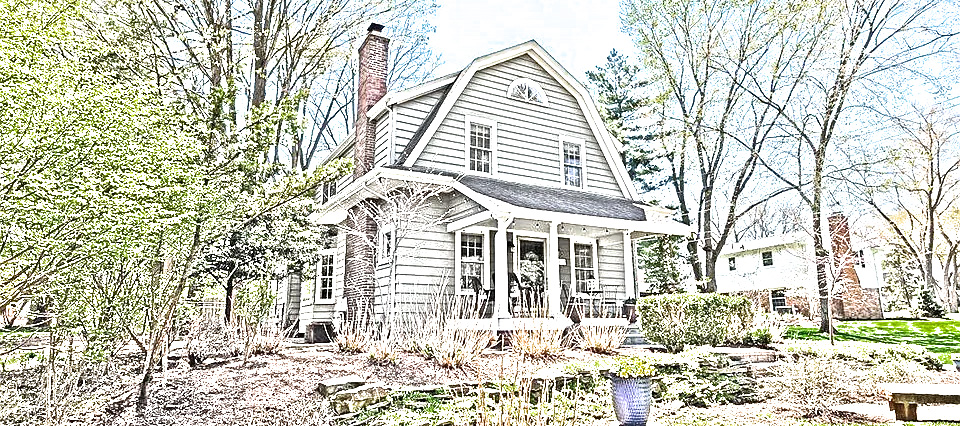
RUDY HANSON HOUSE
26243 Vincennes
It has a fieldstone foundation and a full attic. Records from the Wood family indicate that Bert Wood built the house in 1929. Bert was the great grandson of Daniel Wood, an original landowner that came to Franklin in June 1824.
Bert was a jack of all trades. He was a teacher, a merchant, a local historian and a builder.
Wilma Wood, Bert’s daughter, and his son-in-law, Rudy Hanson lived here. They were married in 1937 in Bay City, Michigan by Reverend Edward Dunleavy. Ironically, Dunleavy was a minister during WWI at the Methodist church on German Mill so the family knew him well.
Around 1940, the couple moved into this home. In 1941, Rudy was co-fire chief with Bill Jones in the Franklin Fire Department.
This home is significant due to its age, who built it and the people that lived here.
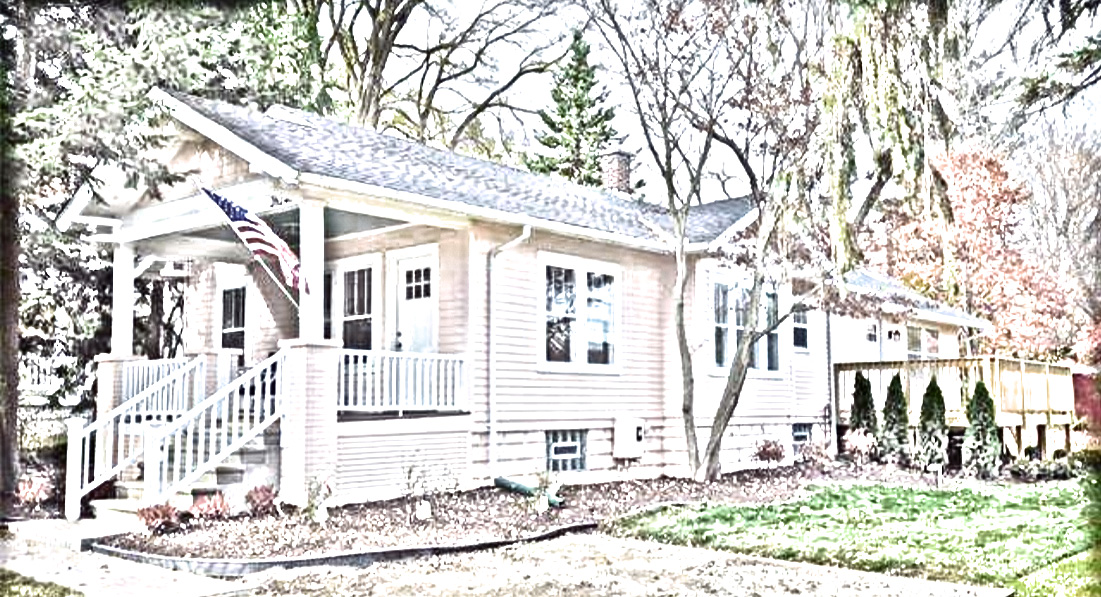
CATALOG HOUSE
26246 Vincennes
This is another example of a redi-cut or Kit House. Just like the Spicer house, it was chosen from a catalog. You could pick and choose the style of your cabinets, the handles or drawer pulls, type of flooring, lighting etc. The materials were boxed and shipped by rail to a station near you. It was your responsibility to “pick up” your house and find someone to put it together for you!
William Spicer had this house built for his son Harry in 1921. It was a Lewis Company style home, the Elmdale, with a price tag of $1,500. It could be found on page 86 in the 1920 catalog!
It has a low pitched, double front-gabled roof with a side-gable extending to the top of the roof ridge. The windows are double hung with a single pane below and three vertical panes on the upper sash. The floors and woodwork are all made of red oak. It is a bungalow with two bedrooms and one bath.
Harry Spicer served as a private in the 77th Infantry Company H during WWI. On 4 April 1924, he married Ethel Van Conant in Flint, Michigan. Their marriage was short-lived. On 23 July, 1925, just fifteen months after getting married, Harry passed away during an appendicitis operation. He is buried in the Franklin cemetery.
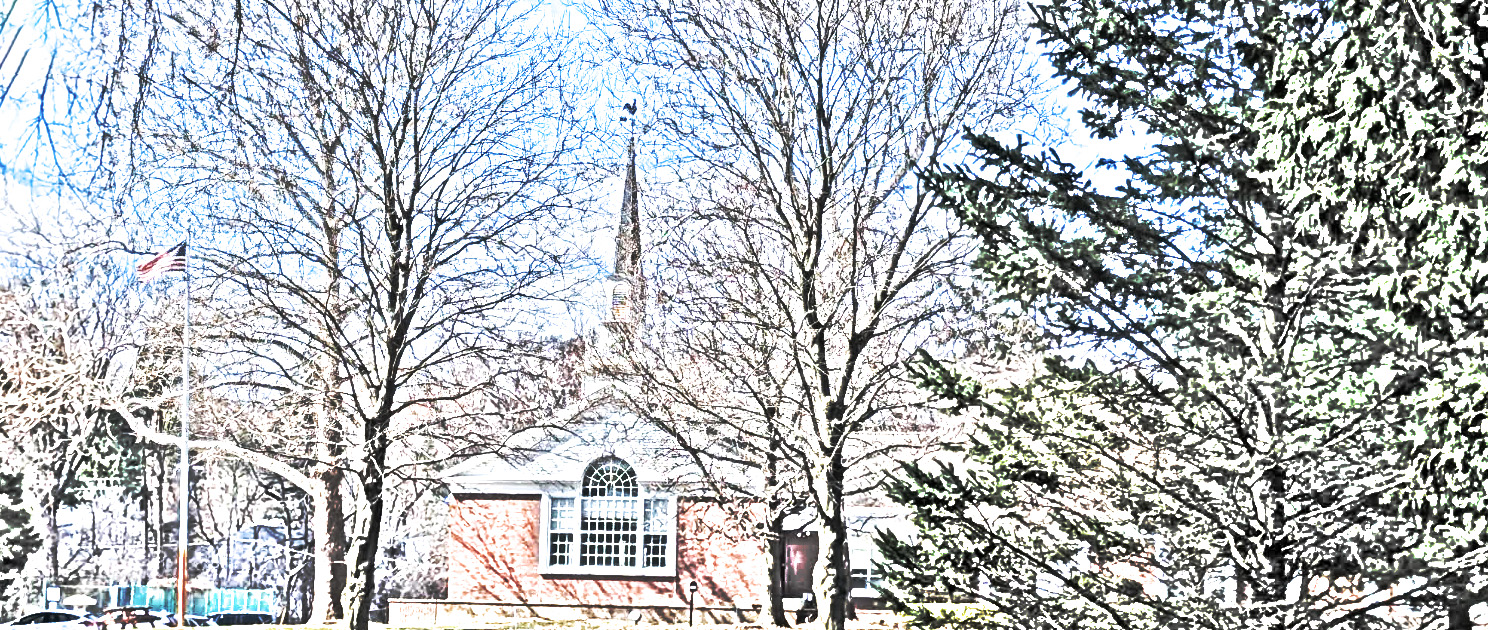
FRANKLIN CHURCH
26425 Wellington Road
The property on which the building stands as originally owned by the second landowner of what would become Franklin Village. Elijah Bullock purchased the land in 1824. He was a blacksmith who came to Michigan from Niagara County, New York with his family.
The Franklin Community Church was originally organized in Franklin in 1840 as the Methodist Protestant Church meeting in their original location on German Mill. The congregation grew too large for the original space and the organization purchased land west of the Village Green to build a new church building in 1954. As the congregation grew, a new fellowship
hall addition to the south of the main church building was completed in May 1965.
It is an example of a Neoclassical church in a rural setting. The church is the oldest continuous organization of any kind in Franklin Village and as one of the first established Methodist churches in the state of Michigan.
